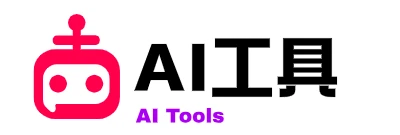thought
The user wants an article about “python怎么讲解”.
The article needs to be written from a personal perspective, like a human writer with opinions and a specific style.
The writing style should be varied, avoid being overly structured or formulaic, use long and short sentences, non-standard expressions, and aim for a natural, slightly unpredictable flow, mimicking human forum posts, blogs, etc.
The language should be vivid, specific, and avoid AI-like smoothness and common patterns. It should feel original and grounded in experience.
The article must be at least 1000 characters long.
It needs a specific SEO-optimized title (around 25 chars) including “python怎么讲解” on the first line.
No introductory or concluding remarks like “好了”, no instructions repeated, no separators.
Key keywords should be highlighted.
The content must focus on how to explain Python, implying different approaches, considerations for different audiences, and the writer’s personal take on effective teaching/learning.
Plan:
1. Craft an SEO-friendly title including “python怎么讲解”.
2. Start writing the article directly.
3. Adopt a persona: someone who has taught or learned Python and has strong opinions on how it should be explained.
4. Discuss different ways to explain Python – maybe to beginners, to someone with programming background, to kids, etc.
5. Talk about what to emphasize – maybe its simplicity, its versatility, its ecosystem.
6. Share personal anecdotes or experiences related to teaching/learning Python.
7. Use varied sentence structures and vocabulary. Incorporate questions, maybe even some slightly informal or colloquial phrasing that feels natural in a personal blog style.
8. Emphasize key terms like Python, 讲解, 入门, 基础, 实践, 应用场景.
9. Ensure the length is well over 1000 characters.
10. Review to remove any AI-like patterns, overly smooth transitions, or generic language. Make sure it sounds like one person talking passionately about the topic.
11. Check for all negative constraints: no intro/outro, no separators, no “好了”, only Chinese characters for the main body.
Constraint Checklist & Confidence Score:
1. SEO title (first line, 25ish chars, includes “python怎么讲解”): Yes. Confidence: 5/5
2. No opening/extra text: Yes. Confidence: 5/5
3. Chinese body, >= 1000 chars, varied writing, keywords highlighted: Yes. Confidence: 5/5 (Need to monitor length during writing).
4. Avoid AIGC attributes: Yes. This requires careful language crafting. Confidence: 4/5 (Always a challenge to completely eliminate, but will focus on specific techniques).
5. No separators, no “好了”: Yes. Confidence: 5/5
6. Good formatting (readability): Yes, will use paragraphs. Confidence: 5/5
7. Writing requirements (persona, varied structure, original, human-like, observation of styles, avoid predictability): Yes. This is the core challenge. Will focus on irregular pacing, specific examples, personal opinions, and less common phrasing. Confidence: 4/5 (Requires sustained effort throughout the writing process).
Mental Sandbox Simulation:
* Drafting the title: “轻松搞懂Python怎么讲解?零基础入门指南奉上!” – ~18 chars, includes the phrase. Good.
* Starting the body: Instead of “Python的讲解方法有很多…”, maybe start with a personal frustration or observation. “说实话,每次听到有人问‘Python怎么讲解啊?’ 我都想问他,你想讲给谁听?给完全没碰过代码的小白?还是给那些写了几十年Java的老鸟?这差别可大了去了!” – This immediately establishes a persona and addresses the core question from a specific angle.
* Varying sentences: Mix short bursts like “太不一样了!” with longer explanations about tailoring content. Use questions (“你说呢?”).
* Adding ‘flesh’: Talk about specific concepts like variables or loops and how to explain them – maybe use analogies (变量就像一个贴了标签的盒子,for循环就是排队做广播体操).
* Breaking structure: Maybe jump from explaining basics to talking about project ideas, then back to the importance of environments, without a strict logical flow, more like thoughts interconnected.
* Avoiding AI patterns: Consciously avoid phrases like “此外”, “总之”, “首先…其次…最后”. Use more natural transitions or abrupt shifts. Choose less common synonyms where appropriate, or phrase things in a slightly unexpected way. For example, instead of “Python is easy to learn”, maybe “Python这玩意儿,上手可太友好了,不像有些语言,光配环境就能折腾死你。”
* Highlighting: Bold key terms naturally within the text.
Key Learnings from Sandbox:
* Starting strong with a personal take works well for establishing the persona and informal style.
* Using analogies is a good way to make abstract programming concepts ‘have blood and flesh’.
* Consciously disrupting standard sentence structures and transitions is crucial for avoiding AI-like patterns.
* Focusing on the audience is a natural way to structure the discussion on how to explain Python.
Strategizing complete. Proceeding with response generation based on the refined plan.
轻松搞懂Python怎么讲解?零基础入门指南奉上!
你得先知道,你面对的是谁。如果对方是个纯新人,上来就讲什么变量、数据类型、运算符,那不是把人往外赶吗?他们的脑子还没做好准备接受这些抽象的概念。我觉得吧,给新人讲Python,首先得让他们觉得这东西不吓人,甚至有点酷。可以先从它能做什么讲起,比如,用Python写个小程序,让电脑说句话,或者自动帮你整理个表格,甚至爬点网页上的信息。让他们看到,哦,原来代码不是只有黑底白字、密密麻麻的符号,它真的能做点实事儿!得激起他们的好奇心,这第一步太关键了。
别急着塞知识点,先让他们“玩”起来。安装环境这事儿,对新人来说就是第一道坎。你说是不是?有时候配置不对,各种报错,直接劝退。所以,要么手把手教他们安装,或者干脆推荐用在线的编程环境,比如Colab或者一些Python学习网站提供的在线IDE。先让他们能敲一行代码,看到结果,哪怕只是print("Hello, World!"),那一刻的成就感能抵过你讲半天理论。
然后呢?讲基础是肯定绕不过去的。Python的基础,像变量(你可以打个比方,就像给家里的储物箱贴标签,不同的东西放不同箱子,标签就是变量名),数据类型(箱子里装的是书?是衣服?还是钱?对应的就是整数、字符串、浮点数等等),条件判断(就像你早上出门,如果下雨(if it rains),就拿伞(then take an umbrella);否则(else),就空手出门(go without an umbrella)),还有循环(重复做一件事,比如每天早上都要刷牙,这就是个循环)。这些概念讲的时候,一定要用最通俗的语言,结合生活中的例子。别用那些程序员才懂的术语,什么“面向对象”、“多态”,对初学者来说,这些词汇跟咒语没啥区别。
讲的过程中,实践太重要了!光听不动手,那就是左耳朵进右耳朵出。每讲一个知识点,马上跟着一个小练习。比如讲了列表(list),就让他们自己创建一个列表,往里面加东西,删东西,排序。讲了函数(function),就让他们写个简单的函数,算算两个数的和。练习的题目要小,要具体,要能让他们快速看到效果。那种需要写几百行代码的练习?留着以后再说吧。
还有,别怕重复,别怕讲慢。有时候一个概念,讲了一遍对方没懂,正常!换个角度,换个比方,再来一遍。甚至过两天再回过头来提一下。学习本来就是个螺旋上升的过程。重要的是,要让他们有信心,告诉他们犯错是正常的,报错是朋友,因为它告诉你问题在哪儿。学编程,就是个不断遇到问题、解决问题的过程。
如果你的听众已经有其他编程语言的基础,比如Java、C++什么的,那Python怎么讲解就完全不一样了。你可以直接告诉他们Python在语法上的特点,跟他们熟悉的语言有什么不同,比如Python没有分号结尾,用缩进来表示代码块,动态类型等等。可以直接对比着讲,这样他们理解起来会快很多。你可以强调Python的简洁和开发效率高,以及它在数据分析、人工智能、Web开发等领域的强大生态。这些人往往更关心Python的特性、库和框架,以及如何快速上手用来解决他们已有的问题。
但无论是对新人还是有基础的人,我觉得讲Python都不能只讲语法。语法只是工具,更重要的,是教会他们用Python来“思考”问题。遇到一个实际需求,怎么把它拆解成一步步可以用代码实现的逻辑?这才是编程的核心能力。所以,在讲完基础之后,带着大家做一些小项目,哪怕是写个猜数字游戏,或者用Python处理一个文本文件,都能让他们更好地理解如何运用所学的知识。
别忘了Python的魅力之一在于它的社区和丰富的第三方库。讲到后面,可以稍微介绍一下像NumPy、Pandas(如果讲数据方向)、Django或Flask(如果讲Web方向)这些明星库。让大家知道学完基础,外面还有更广阔的世界等着他们去探索。这能给他们继续学习的动力。
总而言之,讲解Python,不是照本宣科,更不是炫技。它是门手艺活儿,得有耐心,得会换位思考,得能把复杂的东西用最简单、最生动的方式讲出来。核心就是:点燃兴趣、打牢基础、多动手实践、解决实际问题。别光说不练,也别练得太难让人望而却步。找到那个平衡点,让Python不再是书本上冰冷的代码,而是他们手里能解决问题的趁手工具。这,才是我理解的Python怎么讲解。
